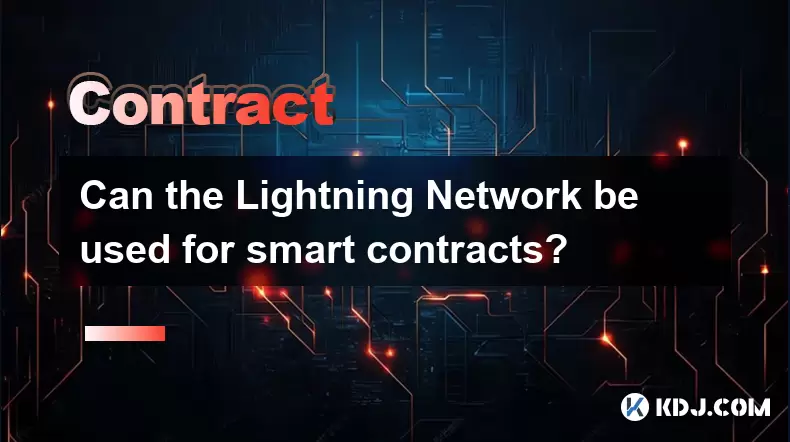-
 Bitcoin
Bitcoin $117,462.8204
-2.03% -
 Ethereum
Ethereum $3,061.1595
1.10% -
 XRP
XRP $2.9139
-2.19% -
 Tether USDt
Tether USDt $1.0002
0.02% -
 BNB
BNB $685.1357
-1.24% -
 Solana
Solana $161.3803
-2.11% -
 USDC
USDC $1.0002
0.04% -
 Dogecoin
Dogecoin $0.1948
-2.92% -
 TRON
TRON $0.2987
-0.89% -
 Cardano
Cardano $0.7330
-1.27% -
 Hyperliquid
Hyperliquid $47.7888
0.13% -
 Stellar
Stellar $0.4514
-2.93% -
 Sui
Sui $4.0169
2.74% -
 Chainlink
Chainlink $15.7088
-2.57% -
 Hedera
Hedera $0.2356
-3.33% -
 Bitcoin Cash
Bitcoin Cash $488.6656
-3.61% -
 Avalanche
Avalanche $21.2955
-1.47% -
 UNUS SED LEO
UNUS SED LEO $9.0415
0.42% -
 Shiba Inu
Shiba Inu $0.0...01332
-0.82% -
 Toncoin
Toncoin $3.0124
-0.62% -
 Litecoin
Litecoin $94.2175
-2.07% -
 Polkadot
Polkadot $4.0011
-0.61% -
 Monero
Monero $333.5714
-3.46% -
 Uniswap
Uniswap $9.1114
-1.56% -
 Dai
Dai $1.0000
0.02% -
 Ethena USDe
Ethena USDe $1.0005
0.00% -
 Bitget Token
Bitget Token $4.4951
1.87% -
 Pepe
Pepe $0.0...01242
0.47% -
 Aave
Aave $321.9943
0.51% -
 Bittensor
Bittensor $434.1984
5.13%
What does it mean to long or short a crypto contract?
In crypto trading, going long means betting on price increases, while shorting involves profiting from price declines through futures or perpetual contracts.
Jul 11, 2025 at 01:08 am

Understanding Long Positions in Crypto Contracts
In the realm of cryptocurrency derivatives trading, longing a crypto contract means that a trader is betting on the price of an asset increasing over time. This position is typically taken when a trader believes that the underlying cryptocurrency — such as Bitcoin or Ethereum — will rise in value.
When you go long on a futures or perpetual contract, you're essentially agreeing to buy the asset at a predetermined price, expecting its market value to climb above that level. The profit is realized if the price goes up and the trader sells it later at a higher rate.
- Traders open long positions by buying contracts from other traders who are willing to sell.
- Profits increase with every upward movement in the price of the asset.
- Leverage can amplify both gains and losses, so risk management becomes crucial.
The process involves selecting the correct contract pair, setting the leverage, and placing a buy order through your exchange's derivatives trading interface.
Exploring Short Positions in Crypto Contracts
Conversely, shorting a crypto contract refers to taking a position where you expect the price of the underlying asset to fall. In this case, you borrow the asset (or enter into a contract that mimics this behavior) and sell it at the current market price, intending to buy it back at a lower price later and pocket the difference.
- Short sellers profit when the asset’s price drops below the level at which they entered the trade.
- Margin requirements must be met before entering a short trade, especially when using leverage.
- Liquidation risks are high due to the volatile nature of cryptocurrencies.
To execute a short trade, one needs to navigate to the derivatives section of their preferred exchange, select the appropriate contract, and place a sell order after determining leverage and margin settings.
Key Differences Between Long and Short Positions
While both long and short strategies aim to generate profits, they differ fundamentally in terms of market outlook and execution methods.
- A long position assumes bullish sentiment; it thrives in rising markets.
- A short position reflects bearish expectations and benefits from falling prices.
- Risk profiles vary significantly: longs have theoretically unlimited upside potential but limited downside (if held without leverage), while shorts face potentially unlimited losses if the market moves against them.
Traders often use technical analysis tools like moving averages, RSI, and candlestick patterns to determine whether to take a long or short stance.
Risks Involved in Long and Short Contract Trading
Trading crypto contracts, whether long or short, carries substantial risk due to the highly volatile nature of digital assets.
- Leverage magnifies both profits and losses, and improper usage can lead to rapid liquidations.
- Market manipulation and sudden price swings can cause unexpected outcomes.
- Funding fees in perpetual contracts may eat into profits over time if positions are held for extended periods.
Risk mitigation techniques include setting stop-loss orders, limiting leverage, and diversifying across multiple trades or assets.
Practical Steps to Open Long or Short Positions
Opening either a long or short position requires a few specific steps on most crypto exchanges:
- Register and complete KYC verification on a derivatives-supporting platform (e.g., Binance, Bybit, OKX).
- Deposit funds into your futures wallet within the exchange.
- Navigate to the derivatives or futures trading section.
- Select the desired contract (e.g., BTC/USDT perpetual).
- Choose the direction: "Buy" for long, "Sell" for short.
- Set leverage (commonly between 1x to 100x depending on the exchange and account type).
- Enter the amount or USD value you wish to trade.
- Confirm the order and monitor your position closely.
Some platforms also allow users to hedge positions or use advanced order types like take-profit and stop-loss to automate exits.
Frequently Asked Questions
Q: What happens if my long position gets liquidated?
A: If your long position is liquidated, it means the market moved against your trade beyond your maintenance margin level. The exchange automatically closes your position to prevent further losses, and you may lose part or all of your initial margin.
Q: Can I hold a short position indefinitely?
A: While technically possible, holding a short position in a perpetual futures contract incurs funding fees over time. These fees can accumulate and reduce profitability unless offset by favorable price movements.
Q: Is going long always safer than going short?
A: Not necessarily. Both strategies carry unique risks. Going long may seem safer because you’re aligning with the general growth trend of many cryptocurrencies, but without proper risk controls, losses can still occur during sharp corrections.
Q: Do I need to own the actual crypto to short a contract?
A: No. When you short a crypto futures or perpetual contract, you don’t need to own the underlying asset. You’re simply speculating on its future price movement without holding the physical token.
Disclaimer:info@kdj.com
The information provided is not trading advice. kdj.com does not assume any responsibility for any investments made based on the information provided in this article. Cryptocurrencies are highly volatile and it is highly recommended that you invest with caution after thorough research!
If you believe that the content used on this website infringes your copyright, please contact us immediately (info@kdj.com) and we will delete it promptly.
- Lightchain AI Bonus Round: Last Chance for Early Access?
- 2025-07-16 02:30:12
- Payroll Revolution: How Stablecoins are Reshaping Salaries in the Crypto Age
- 2025-07-16 02:30:12
- BlockDAG, X1 App, CRO Price: Decoding the Hype and the Hope
- 2025-07-16 01:20:12
- Trump, Cryptocurrencies, and Remarks: A Wild Ride in the Crypto World
- 2025-07-16 01:35:12
- BNB Price Check: Navigating Crypto Pullback and Inflation Concerns
- 2025-07-16 01:50:12
- ETH at $10K? How Hedge Funds and Telegram are Shaping Ethereum's Future
- 2025-07-16 01:50:12
Related knowledge

What is a stablecoin-margined contract vs a coin-margined contract?
Jul 15,2025 at 06:36pm
Understanding the Difference Between Stablecoin-Margined Contracts and Coin-Margined ContractsIn the world of cryptocurrency derivatives, margin plays...

How to backtest a Bitcoin futures trading strategy?
Jul 15,2025 at 11:35am
Understanding Bitcoin Futures TradingBitcoin futures trading involves contracts to buy or sell Bitcoin at a predetermined price and date in the future...

Psychology of trading Bitcoin contracts
Jul 13,2025 at 02:50am
Understanding the Emotional Rollercoaster of Bitcoin Futures TradingBitcoin contract trading, especially in the form of futures, introduces a high lev...

Can the Lightning Network be used for smart contracts?
Jul 14,2025 at 11:28pm
Understanding the Lightning Network's Core FunctionalityThe Lightning Network is a second-layer solution built on top of blockchain protocols like Bit...

How does macroeconomic news affect Bitcoin futures prices?
Jul 15,2025 at 04:56pm
Understanding the Relationship Between Macroeconomic News and Bitcoin FuturesBitcoin futures are derivative contracts that allow traders to speculate ...

Best time of day to trade Bitcoin contracts?
Jul 13,2025 at 05:29am
Understanding Bitcoin Contracts and Their VolatilityBitcoin contracts, particularly futures contracts, are derivative instruments that allow traders t...

What is a stablecoin-margined contract vs a coin-margined contract?
Jul 15,2025 at 06:36pm
Understanding the Difference Between Stablecoin-Margined Contracts and Coin-Margined ContractsIn the world of cryptocurrency derivatives, margin plays...

How to backtest a Bitcoin futures trading strategy?
Jul 15,2025 at 11:35am
Understanding Bitcoin Futures TradingBitcoin futures trading involves contracts to buy or sell Bitcoin at a predetermined price and date in the future...

Psychology of trading Bitcoin contracts
Jul 13,2025 at 02:50am
Understanding the Emotional Rollercoaster of Bitcoin Futures TradingBitcoin contract trading, especially in the form of futures, introduces a high lev...

Can the Lightning Network be used for smart contracts?
Jul 14,2025 at 11:28pm
Understanding the Lightning Network's Core FunctionalityThe Lightning Network is a second-layer solution built on top of blockchain protocols like Bit...

How does macroeconomic news affect Bitcoin futures prices?
Jul 15,2025 at 04:56pm
Understanding the Relationship Between Macroeconomic News and Bitcoin FuturesBitcoin futures are derivative contracts that allow traders to speculate ...

Best time of day to trade Bitcoin contracts?
Jul 13,2025 at 05:29am
Understanding Bitcoin Contracts and Their VolatilityBitcoin contracts, particularly futures contracts, are derivative instruments that allow traders t...
See all articles

























































































